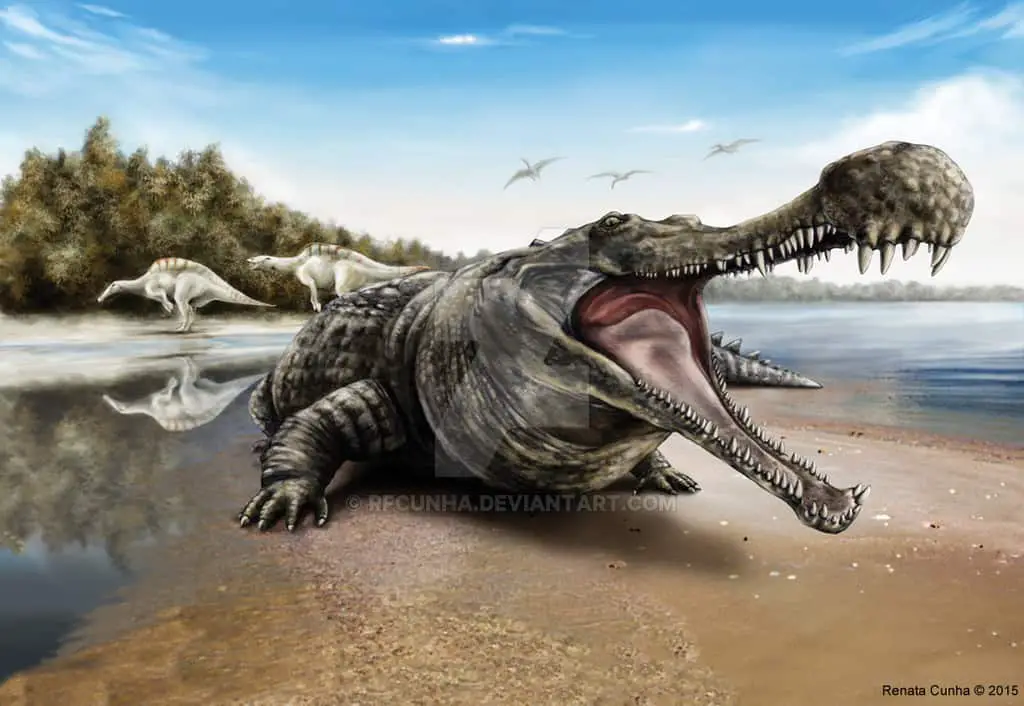
Cyclotosaurus- The Cyclotosaurus is an extinct genus of temnospondyl within the family Mastodonsauridae. It was of great size for an amphibian, reaching 3–4.3 m in length with an elongated 70 cm skull. This amphibian mainly focused on small fish such as Triops longicaudatus. This predator of the ocean made it very hard to be seen since it was always lurking around in the sand.

Diplocaulus- The Diplocaulus is an extinct genus of lepospondyl amphibians which lived from the Late Carboniferous to Permian periods of North America and Africa. Diplocaulus are by far the largest and most well-known lepospondyls, characterized by a distinctive boomerang-shaped skull. It was more focused on avoiding bigger predators than itself. It fed on insects and fish.

sarcosuchus- The sarcosuchus lived 112 million years ago during the Cretaceous Period. It lived in what is now Africa and South America. The Sarcosuchus weighed roughly 18,000 lbs and in length was around 12 meters, and with a bite force of 9 tons this was one of the top predators for the water/animal dwelling creature. It fed on fish and sometimes even land animals who were twice as big lying on the riverbank it would pounce out like an average alligator or crocodile would.